The Rounded Back Deadlift
Author:
Reviewed by:
(21 years of Oly Lifting experience)
Unlock your full potential by engaging with our experts and community! Have questions about your fitness journey or looking for expert advice on weightlifting techniques? Don’t hesitate — leave a comment below and Sergii Putsov will provide a personalized answer and insights to help you reach your goals.
Torokhtiy is reader-supported. Some links are affiliate links, and we may earn a commission at no extra cost to you. See our disclosure page for details.
The concept of performing a rounded back deadlift may initially seem controversial, but once we explain this technique, you’ll understand why more athletes are embracing it.
Is a Rounded Back Deadlift Good? The rounded back deadlift is a deadlift technique where the athlete arches their middle spine to better activate the upper back muscles, such as the lats, traps, and rhomboids. When done correctly, there are virtually no downsides to the upper back rounding deadlift.
The reality is that we all have unique body structures, while exercise equipment has standardized measurements. As a result, not everyone will find it easy to grip and hold a barbell in the deadlift position without slight rounding in their upper back, and that’s perfectly acceptable.
It’s important to note that the majority of the load during a deadlift is borne by the Lumbar Vertebrae, commonly known as the lower back. As long as you maintain a straight lower back, you can leverage the rounded upper back technique to make the exercise more accessible and enhance the development of your upper back muscles at a faster rate.

What Are Rounded Back Deadlifts?
As the name suggests, the rounded back deadlift is a deadlift variation where the athlete intentionally creates rounding in their back by bending the spine. This raises the question: why would anybody deadlift with an arched back? After all, one of the first things taught to beginner lifters and emphasized by most coaches is how to keep the back straight during deadlift reps.
Yes, bending at your lower back during deadlifts is dangerous and should be avoided. However, utilizing the proper rounded back deadlift form is not dangerous and has its benefits over a fully straight spine. But to better understand the round back deadlift and how to use selective rounding to our advantage, we first have to understand the anatomy of our back, more specifically the spine itself.
In the most basic terms, our spine can be divided into:
- Lumbar Vertebrae – Commonly referred to as the “lower back”, it consists of five vertebrae and their accompanying discs marked from L1 to L5. It plays a crucial role in connecting your upper and lower body and bears most of your weight and the weight of objects you try to lift. This is the part of your back that takes on the most load when you deadlift.
- Thoracic Vertebrae – It’s made up of twelve vertebrae marked T1 to T12 and their discs. Technically, this area is considered the middle spine, although it is referred to as the upper-middle or just the upper back in conversation. It takes on less of the brunt weight during deadlifts than your lower back. Advanced athletes may intentionally round their middle back to more evenly activate back muscles, for example, traps and lats.

- Cervical Vertebrae – Although technically the upper spine, it’s often referred to as simply the “neck area” on its own. It contains seven discs and vertebrae labeled C1 to C7 that move and rotate your neck and head. The neck area doesn’t take on the weight force from the deadlift, although athletes tend to tighten them up when correcting their back and bracing, creating muscle activation around it.
It’s important, however, to differentiate between the terms “upper spine” and “upper back”. When people use the term “upper back” in everyday gym conversation, they actually refer to the middle spine. This is because the middle spine is surrounded by the largest upper back muscles engaged by popular upper back training exercises, such as rowing.
To achieve the proper rounded back deadlift form, simply create a natural arch in your Thoracic Vertebrae (middle spine) by gently rotating your shoulders inward to create the rounding effect. By doing so, you tighten and engage the large muscles in your upper back, additionally promoting their development.
To ensure you don’t overdo it, pay attention to the sensation in your lower neck. It should feel slightly tightened, but not to the extent where your natural head movements (up-down, left-right) become overly restricted or painful. Some athletes may already naturally round their upper back to reach down and grip the barbell on the floor. This tendency can result from a variety of reasons, for example, athlete size, mobility and flexibility, or chronic pain.

Upper Back Rounding
It’s not a mistake if your deadlift requires slight rounding in the middle and upper back to reach the barbell, as everybody’s built differently while the equipment is a universal size. In fact, the upper back rounding deadlift is a simple way to add additional upper back muscle activation to your deadlift workout. You’ll often see professional lifters intentionally add thoracic rounding during deadlift exercises. Note that if you’re used to lifting with a completely straight spine, this technique may require you to slightly lower your max capacity.
Follow us!

Free!
Get a 2-week Weightlifting Program as a bonus for the subscription to kickstart your training plan!

Free!
Lower Back Rounding
Rounding at the lower back or lumbar spine is dangerous as it is a common place of injury for deadlifts and other powerlifting exercises. Most commonly, the rounding occurs as a result of the athlete attempting to lift weight above their maximum capacity and failing. In very few exceptions, some highly advanced athletes perform the lower back rounding deadlift as a method of specifically adding more load on the lower back to further train it. But even then, there’s no solid data on the effectiveness of the rounded lower back deadlift to prove its utility over the regular deadlift, and many lifters question this technique when considering the risk factor.
Experiencing lower back rounding during deadlifts indicates that your spine is bending due to either improper form, excessive weight, or both, which should be corrected immediately before you continue.
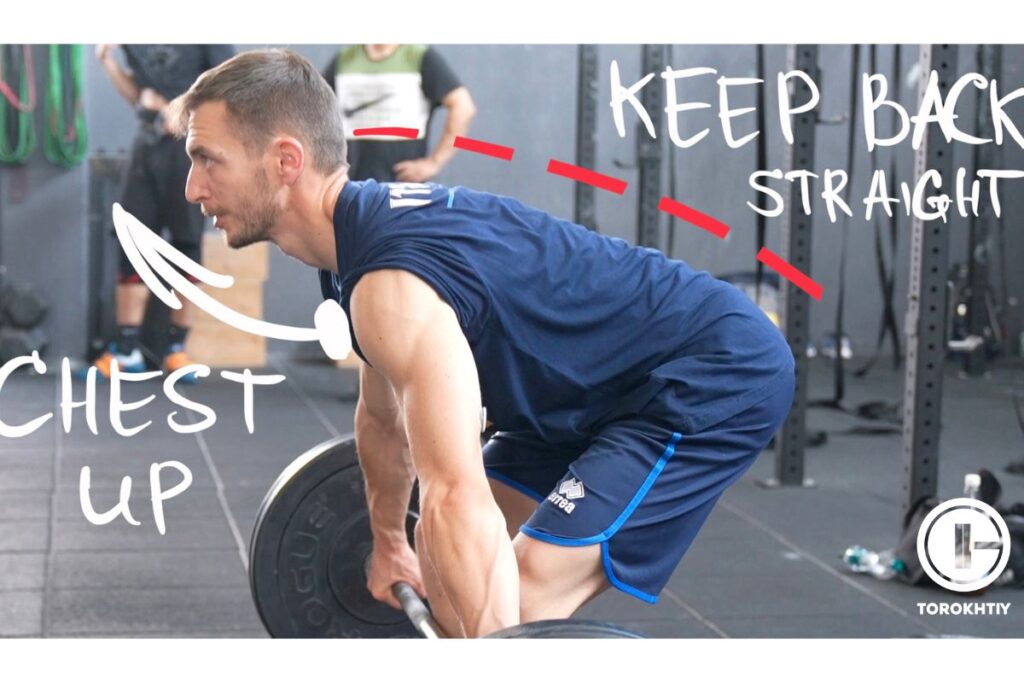
Dangers And Cons Of Rounding The Lower Back While Deadlifting
1. Compromised Technique
For most individuals, especially beginners, focusing on maintaining proper form and technique with a neutral spine position is paramount. It doesn’t matter how good your setup is, if you round your lower back, it all comes falling down like a house of cards.
Maintaining proper form and alignment during deadlifts is crucial for maximizing the effectiveness of the exercise and ensuring your safety. At the very least, this way you won’t achieve optimal muscle development and strength gains, which defeats the exercise purpose. More importantly, this severely increases the risk of injury.
2. Common Cause Of Injury
As briefly touched upon earlier, ending up in a rounded lower back deadlift is a common way people get injured, especially beginners who are still unfamiliar with their weight maximums. It’s not uncommon for an inexperienced lifter working out without assistance to simply think they aren’t trying hard enough and force it until they create a fracture, tear, sprain, etc.
The deadlift is a compound exercise that targets a number of muscle groups at the same time. Among them are some of the largest in the entire body, including the gluteus, hamstrings, and trapezius. Many of the targeted muscles are essential for everyday activities and injuring them can easily take you out of training for a while, not to mention make your life difficult until you fully recover.
Meanwhile, spinal injuries are in a league of their own when it comes to seriousness. Injuring your lumbar area with an improperly executed lower back rounding deadlift can take you out of training for months. Recovery periods can be long and hard, requiring medical treatments, rehabilitation, and lifestyle adjustments. They often demand higher levels of physical therapy or even surgery and can have lifelong consequences.
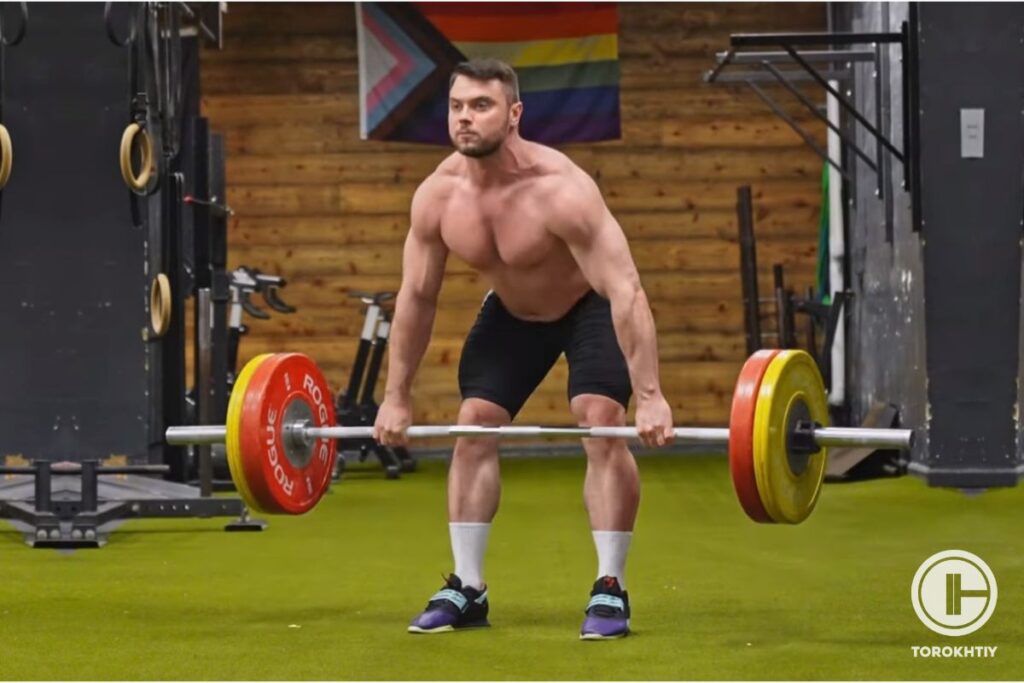
3. Loss Of Performance
Deadlifting with a rounded back will have a negative impact on your lifting mechanics and performance. If a weight amount is giving you trouble to the point where you start bending at the lower spine, you’ve overshot and should lower it to avoid inconveniences. However, the opposite is also true, in that rounding your back before attempting to lift lowers your force generation and reduces your maximum capacity.
As mentioned previously in the article, the lumbar vertebrae are a major weight carrier when picking up objects. If we allow it to round itself during deadlifts, it compromises the natural alignment of the spine and diminishes the ability to support the load we put on it. This creates a domino effect where the body realizes it can’t carry the weight and tries to compensate by activating more and more muscles, leading to inefficient force transfer, reduced muscle activation in the intended target muscles, and an increased reliance on compensatory muscles that weren’t supposed to be part of the exercise.
Should You Lift With A Rounded Back?
Lifting and carrying objects is a common daily life activity. Even people who don’t work out, at least not with weights, have probably felt the sensation of being unable to lift an object from the ground while their lower spine is bent and many end up hurting themselves in the attempt.
When you lift with a rounded back, especially during exercises like deadlifts, you compromise the natural alignment of your spine. This can result in excessive stress on the spinal discs, ligaments, and supporting muscles such as the Erector Spinae.
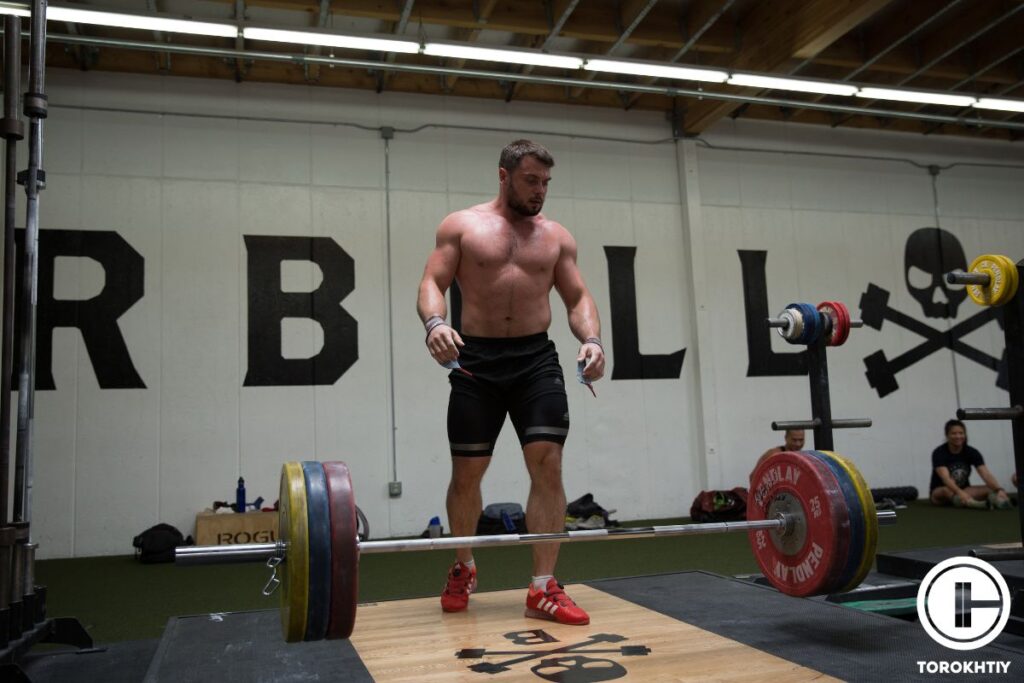
How To Prepare For Deadlifting With A Rounded Back
1. Prepare Multiple Weight Sets
Depending on your musculature and fitness level, you might find the rounded back deadlift easier or harder to do. This is why it’s a good idea to grab a few progressing weight plates instead of your usual, especially if you’re at a public gym where they can become unavailable if someone else grabs them.
2. Bend At The Hips And Knees
The proper way to reach down to the barbell and enter your starting stance is by bending your hips backward and up and your knees forward and down. A common mistake people make is bending at the core, which already rounds the lower back.
3. Brace Your Core Before Rounding
Once you grip the barbell, take a deep breath into your diaphragm (stomach) to brace. Once your core is strengthened it will be much harder for your lower spine to accidentally move around. Now, you can flex your upper back muscles to create the rounding.
4. Always Look Forward
The position of your head can dictate the position of your spine. Novice athletes tend to look down because they lack the muscle memory to enter and exit the exercise confidently without looking. This is perfectly normal and something you should simply train.
For deadlifts, it’s ideal if you could maintain a forward gaze at all times. If you lack the mobility and flexibility in your neck to do so for one reason or another, keeping your dead in a neutral position to your spine is good enough.
How To Stop Rounding The Lower Back When Deadlifting
Firstly, it depends on what’s causing the issue. If you’re simply new to lifting, it may be that your technique is not there yet and you should keep practicing with adequate weight. If you need a reminder not to round your back, work with a coach, train with a spotter, practice in front of a mirror, or simply use a phone app to notify you. For beginners, there’s also a good chance you’re using too much weight, so lowering should be an easy fix.
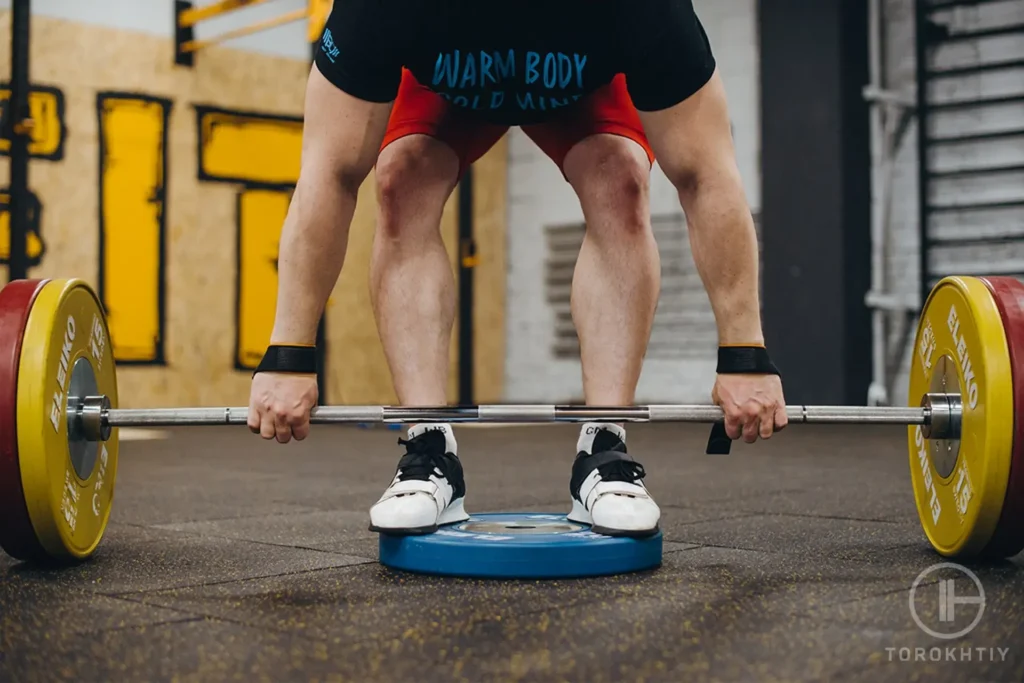
Furthermore, the issue could be related to your shape and size stopping you from properly reaching down to the barbell. In these scenarios, it may be best to experiment with different deadlift variations. For example, the Sumo deadlift has nearly identical health and strength benefits as the regular deadlift, but there is statistical evidence that athletes with shorter limbs and shorter torsos relative to limb length have better performance in the Sumo variation.
If you’re barely missing by an inch or so, placing the weight plates on a slightly elevated surface such as a pair of unused gym tiles can help you get the necessary boost. This will shorten the range of motion, yes, but not enough to completely neutralize the exercise. Eventually, your mobility and flexibility will grow to a point where you don’t need to do this anymore.
If, however, the reason is health-related, for example, an unhealed injury or chronic pain, it may be best to put off lifting until you consult a doctor or physical therapist.
Exercises for Building Deadlift Strength
1. Squats
Like deadlifts, squats are a compound exercise that activates various muscle groups. They help improve your leg and core strength, which are essential for a strong deadlift.
2. Farmer’s Walks
Farmer’s walks simulate carrying large weights over a certain distance. They’re excellent for endurance and mental fortitude, while also the grip, forearms, and core muscles, which are important in deadlifting too.
3. Hip Thrusts
Hip Thrusts increase your hip strength and explosiveness and develop the glutes. The Gluteus Maximus is the largest muscle in the entire human body and a big driver behind lower body power.
4. Pull-Up Variations
Pull-ups not only develop the lats, which play a supportive role in deadlifts, but they’re some of the best exercises for developing grip strength and pulling power, which will help you hold on to the barbell.
5. Core Exercises
Being able to maintain the embraced core state during deadlifts is essential for not losing proper form. Good core exercises to try include plank variations, bicycle crunches, deadbugs, leg raises, etc.
FAQ
How Do You Fix A Rounded Back When Deadlifting?
Other than simply practicing your deadlift technique, trying a lower weight setting, finding your ideal deadlift variation, or placing the barbell on a slightly elevated surface can be beneficial.
How To Keep Your Back Straight During A Deadlift?
If you’ve mastered the proper deadlift technique and aren’t overestimating your weight limits, maintaining a straight spine shouldn’t represent a challenge. If you still find yourself bending your back in the middle of your deadlift, consider working with a qualified coach.
Conclusion
When properly applied, adopting a rounded back deadlift technique can be a net positive for your next deadlift workout. As a reminder, lower back rounding in deadlifts should be avoided. Meanwhile, utilizing thoracic rounding during deadlift reps can contribute to enhanced upper back development.
The lumbar vertebrae portion of your spine, commonly referred to as the lower back, bears the highest load when lifting weights and is prone to injuries during deadlifts. If you find it challenging to prevent your lower back from rounding during deadlifts, consider trying alternative deadlifting styles, reducing the weight load, or seeking professional guidance.
We’d also like to know your thoughts:
Which information did you find the most helpful or informative? Are you currently rounding your back during deadlifts, or will you now attempt to incorporate it after learning about its benefits?
Share your experience in the comment section, and don’t forget to follow us on social media for more valuable fitness content.
Also read:
- Deadlift Starting Position
- Barefoot Deadlift
- Is Sumo Deadlift Cheating
- Good Morning vs Deadlift
- Functional Fitness Deadlift
- Deadlift on Back or Leg Day
- Cues for Deadlift
- Types Of Weight Plates
- Lower Back Pain When Squatting: Causes & Fixes
References:
- Spine Structure and Function // Clevelandclinic: https://my.clevelandclinic.org /health/article s/10040-spine-structure-and-function
- Anatomy, Back, Intervertebral Discs // NIH: https://pubmed.ncbi.nlm.nih.gov /29262063/
- Trapezius // Physio-pedia: https://www.physio-pedia.com/Trapezius
- Strength and Hypertrophy Adaptations Between Low- vs. High-Load Resistance Training: A Systematic Review and Meta-analysis // Physio-pedia: https://www.physio-pedia.com/Latissimus _Dorsi_Muscle
- The effect of increasing loading on powerlifting movement form during the squat and deadlift // Dspace: https://rua.ua.es/ dspace/bitstream /10045/57514/ 1/jhse_Vol_10 _N_3_764-774.pdf
- Electromyographic activity in deadlift exercise and its variants. A systematic review // NIH: https://www.ncbi.nlm.nih.gov /pmc/articles/ PMC7046193/
- Erector Spinae // Physio-pedia: https://www.physio-pedia.com/ Erector_Spinae
- Anthropometrical Determinants of Deadlift Variant Performance // NIH: https://www.ncbi.nlm.nih.gov/ pmc/articles/ PMC6683626/
- ASSESSING AND TREATING GLUTEUS MAXIMUS WEAKNESS – A CLINICAL COMMENTARY // NIH: https://www.ncbi.nlm.nih.gov/ pmc/articles/ PMC6670060/
Why Trust Us?
With over 20 years in Olympic weightlifting, strength training, nutrition coaching, and general fitness our team does its best to provide the audience with ultimate support and meet the needs and requirements of advanced athletes and professional lifters, as well as people who strive to open new opportunities and develop their physical capabilities with us.
By trusting the recommendations of our certified experts in coaching, nutrition, and sports training programming, as well as scientific consultants, and physiotherapists, we provide you with thorough, well-considered, and scientifically proven content. All the information given in the articles concerning workout programming, separate exercises, and athletic performance, in general, is based on verified data.
The product testing process is described in more detail here.
Author: Sergii Putsov
Head of Sport Science, PhD
Best Results: Snatch – 165 kg,
C&J – 200 kg
Sergii Putsov, Ph.D., is a former professional weightlifter and National team member, achieving multiple medals in the 94 kg weight category at national competitions. With a Master’s degree in “Olympic & Professional Sport Training” and a Sport Science Ph.D. from the International Olympic Academy, Greece, Sergii now leads as the Head of Sport Science. He specializes in designing training programs, writing insightful blog articles, providing live commentary at international weightlifting events, and conducting educational seminars worldwide alongside Olympic weightlifting expert Oleksiy Torokhtiy.
Reviewed by: Oleksiy Torokhtiy
Olympic Weightlifting Champion, PhD in Sport Science
Best Results: Snatch – 200 kg,
C&J – 240 kg
Oleksiy Torokhtiy is a professional athlete boasting 20 years of experience in Olympic weightlifting. With multiple European and World titles under his belt, he has showcased his prowess in two Olympic Games (Beijing 2008 and London 2012). Upon concluding his illustrious career, Oleksiy dedicated himself to coaching. By 2022, he had conducted over 200 weightlifting seminars worldwide. He is the visionary behind an international sportswear and accessories brand known for its motto, “Warm Body Cold Mind.” Additionally, he is an esteemed author and the creator of a series of training programs and eBooks.




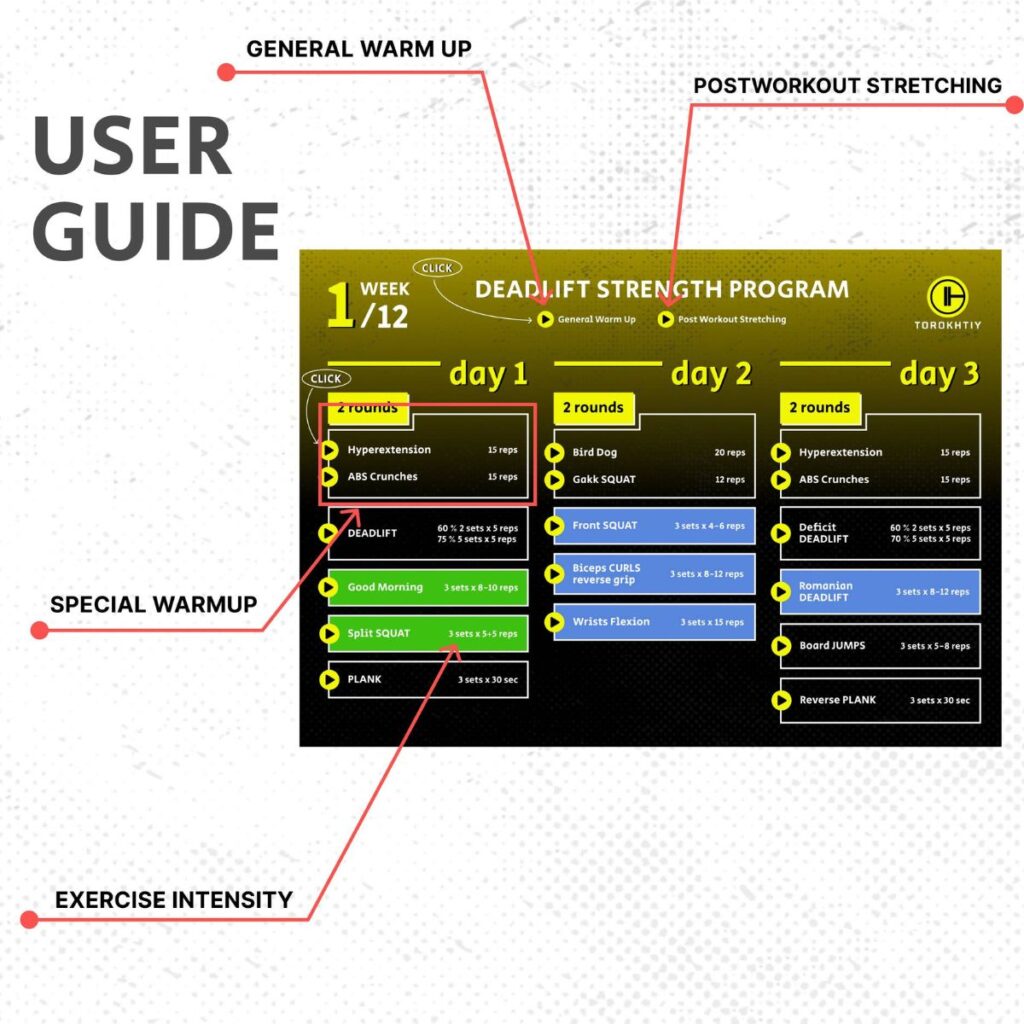
Still have questions after reading our article? Unlock your full potential by engaging with our experts and community! Don’t hesitate — leave a comment below and Sergii Putsov will provide a personalized answer and insights to help you reach your goals.